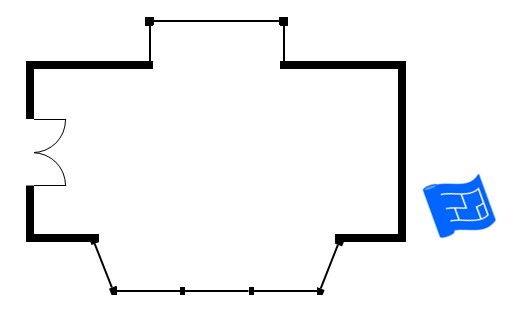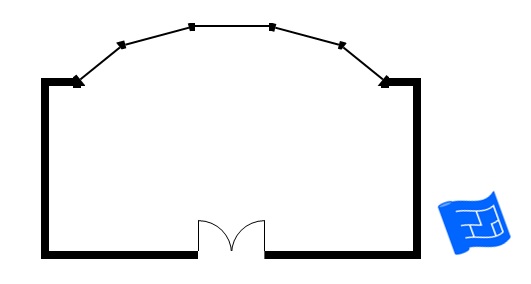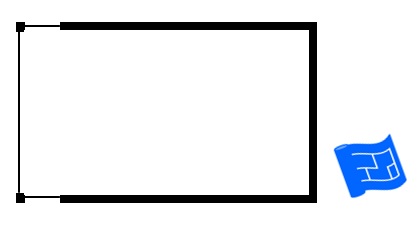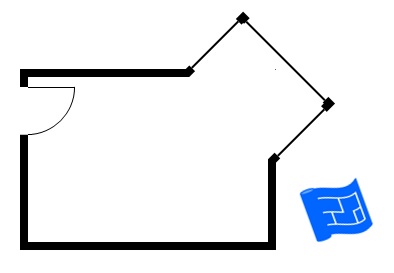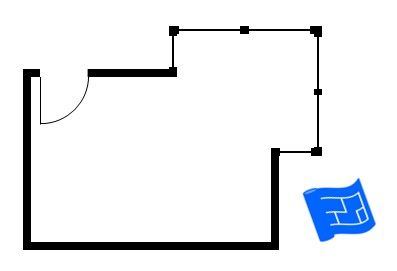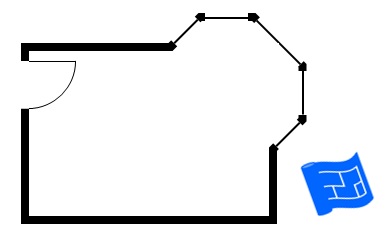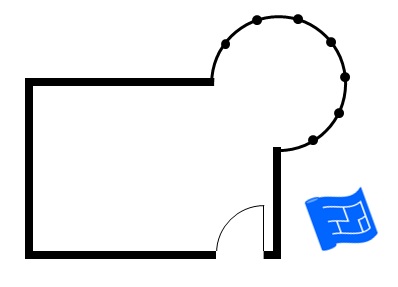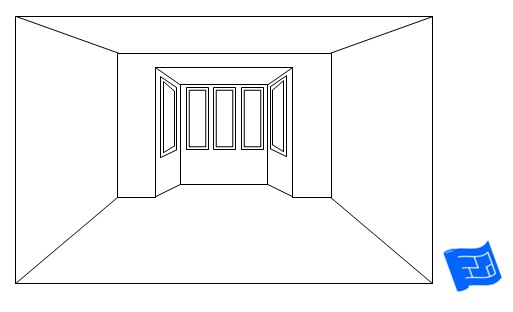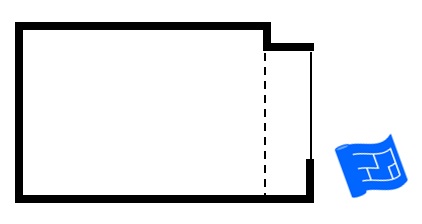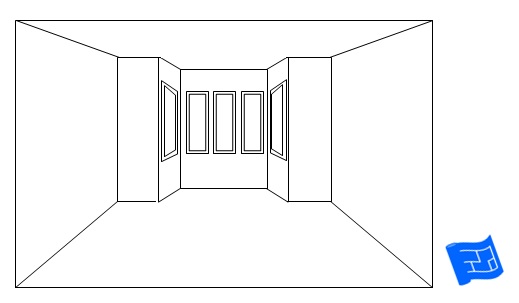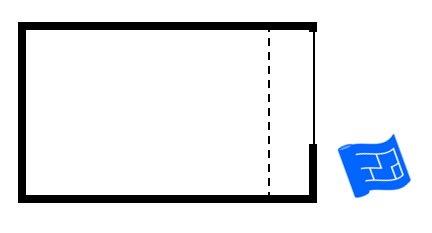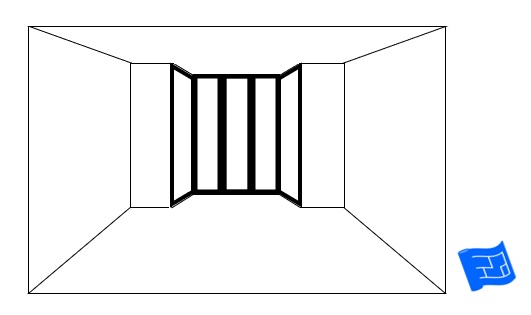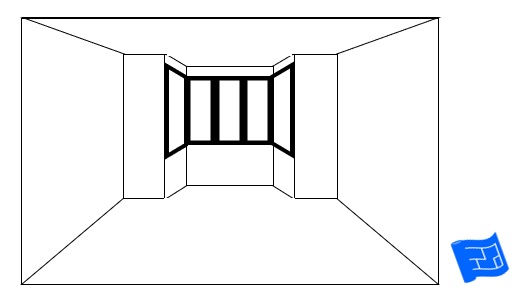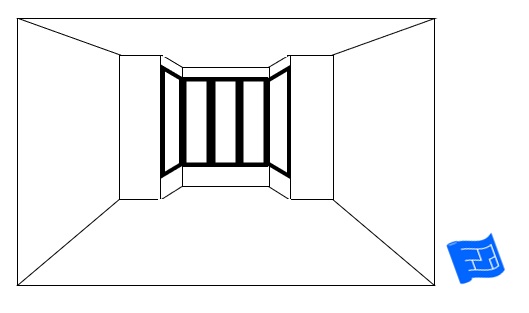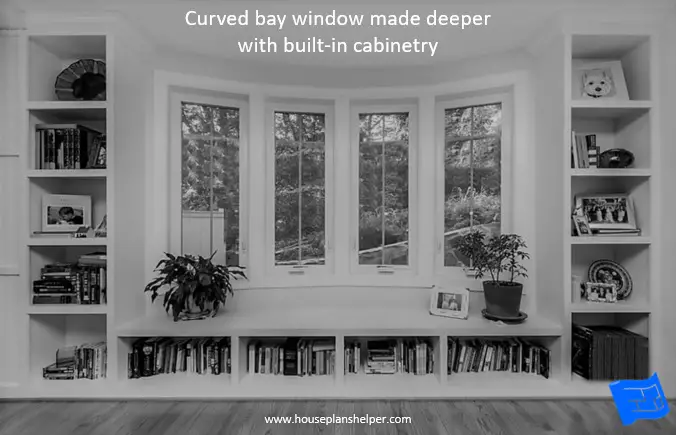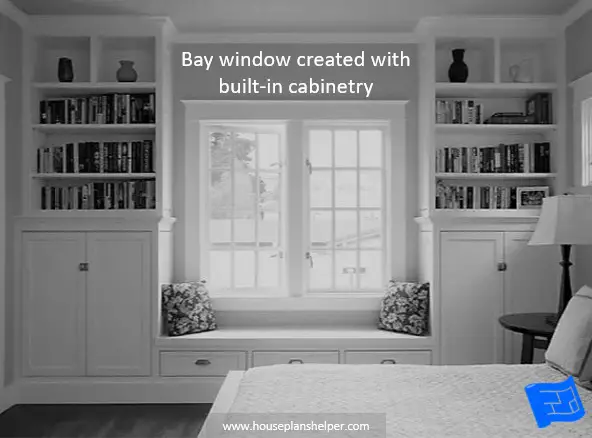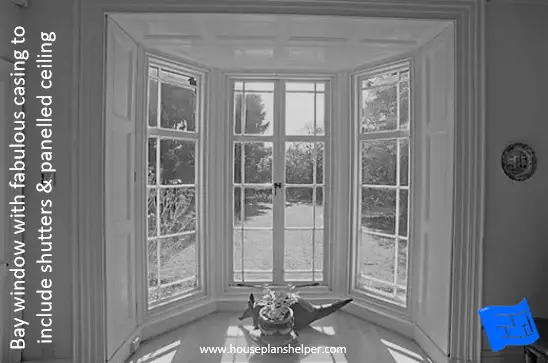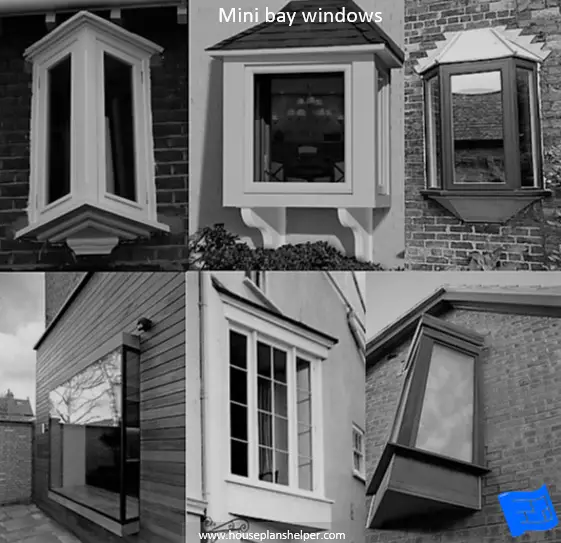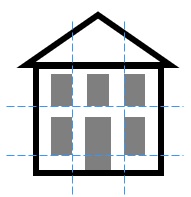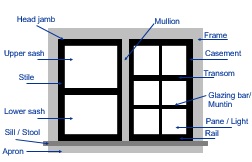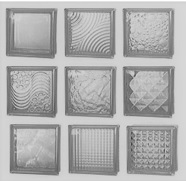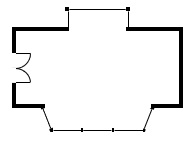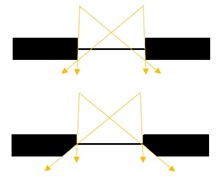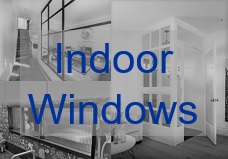- Home
- Window Design
- Bay Window Designs
Bay Window Designs
I’ve been lucky enough to live in a few homes with different bay window designs and in each home, this feature really added to our enjoyment of the space. This page runs through the various design options available and will help you describe how you want your bay window to be.
Bay windows make wonderful settings for living life as they give the feeling of being nearly out of doors. They're a great way of bringing more light into a room.
They can be used in any room:
- Living spaces with space for sitting
- Office spaces with space for the desk
- Dining spaces embracing the table
- Kitchens creating space behind the counter tops for display of plants or other objects.
- Stairs and hallways providing a space and sit and think for a while.
So what design variables do you have to play with when it comes to bay window design? We’ll discuss a few concepts and look at how they would be illustrated on the floor plan. Then we’ll have a look at some real live examples at the bottom of this page.
Characteristics of bay window designs
Shape
Let’s start by considering the shape of your bay window designs
You can go for a square or trapezium shape...
Or more sides until you effectively have a curve.
Ratio of room to bay window dimensions
A bay window that is small in relation to the wall it is built into feels like a nook or cubby whereas a bay window that takes up the majority of the wall it lies on it reads more as part of the whole room and makes the room feel and function like a larger room.
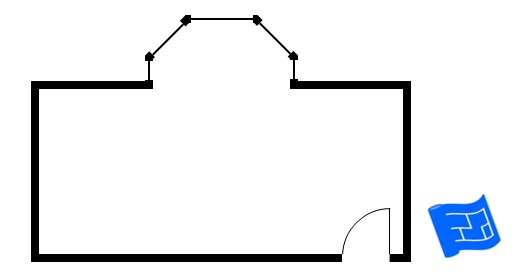 An octagonal bay window which occupies a relatively small amount of space along the wall it's built into creates a cozy nook feeling.
An octagonal bay window which occupies a relatively small amount of space along the wall it's built into creates a cozy nook feeling.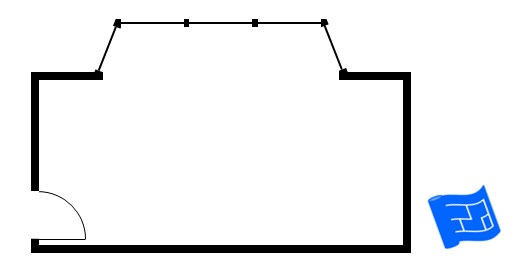 This bay window which is long in comparison to the wall it's built into will feel more integral to the room.
This bay window which is long in comparison to the wall it's built into will feel more integral to the room.You could create a bay along the whole length of the wall if you like.
Furniture layout
In rooms with smaller bay windows think about how the furniture will be laid out in the room. There’s little point having a bay window to have a sofa pushed across the entire length. There needs to be adequate space to form a seating arrangement within the area of the bay window in addition to the main furniture arrangement in the room.
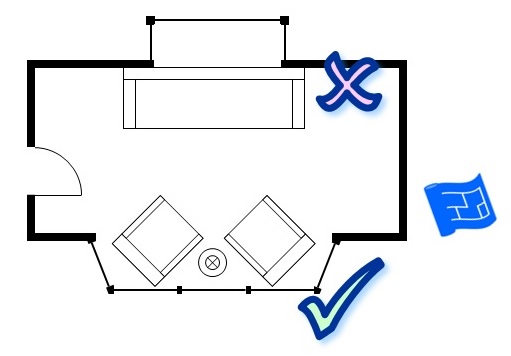 Think about what furniture works best with a bay window. The arrangement of two chairs is preferable.
Think about what furniture works best with a bay window. The arrangement of two chairs is preferable.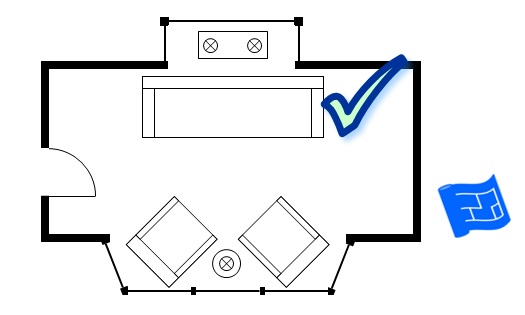 If you need to put a sofa across a bay window pull it away from the bay window slightly and put a table in the bay window with some lamps or a flower arrangement.
If you need to put a sofa across a bay window pull it away from the bay window slightly and put a table in the bay window with some lamps or a flower arrangement.Location in the room
The most obvious place to put a bay window is centrally located on one of the walls. We've seen plenty of examples of that already.
Another option is to put the bay window off the corner which creates an interesting shape both inside and outside. Here's a few examples.
A bay window can also be a great way to create a focal point or axis in a room that has an uneven or irregular shape.
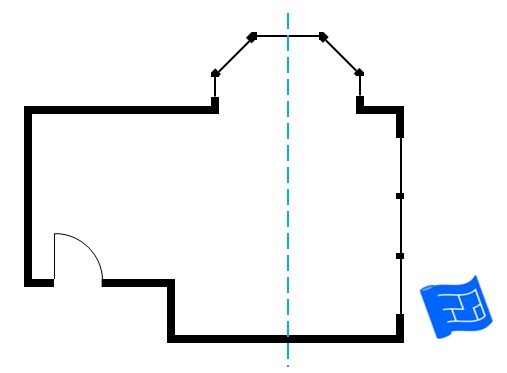 This room is not symmetrical and yet the bay window gives the room a focal point and an obvious axis.
This room is not symmetrical and yet the bay window gives the room a focal point and an obvious axis.Ceiling height
The area within a bay window can be made to feel more cozy by lowering the ceiling height. This can be a good option if you want to create an intimate seating area or a focused work area. The dropped ceiling is an ideal place for some downlights to enhance the atmosphere.
Alternatively the ceiling height can be maintained across the whole room which will have the effect of making the bay feel more part of the room. This is probably the best way to go if the bay window area is relatively large in comparison to the room as a whole as lowering the ceiling height might look a bit odd. For moderate sized bay windows maintaining the ceiling height will make the room feel larger.

Floor height
You may be tempted to create a step up to your bay window. Think carefully about this. Raising the floor makes the area within the bay window into a separate space.
Once the step is in place, will there be enough floor area for the furniture you plan? For example, if you're planning chairs, is there enough room so that they won't fall over the edge of the step if someone moves the chair slightly when they're sitting down?
It's also not advisable to have changes in height that are only one step as they're easy to miss and trip over.
If you want to change the height at floor level, think about creating a window seat out of the whole bay area.
Window Details
Window heights
Let’s talk about the design possibilities of the height of the windows and by that I mean the height of the windows above the floor. Let’s have a look at a few different scenarios. It’s a matter of striking a balance between the view and the function.
There are a few examples of different window heights in the slideshow at the bottom of this page.
Windows floor to ceiling
This has the advantage of letting lots of light in but limits how you can furnish the space. There's no point having windows all the way to the floor to push furniture right up against the windows.
Window sills at waist height
This is a great arrangement if the plan is to have a desk or table in the bay window.
A kitchen eating nook where the seat of the table is built into the bay window works particularly well. It works especially well if the design incorporates enough space to allow a generous sill for plants and other decoration and the stuff of life.
Windows at knee height
I find this a great design if the purpose of the bay window is to provide a small lounge seating area. If there's a window sill it can act as a coffee table for drinks and books.
A window seat at lounge chair height is also a good option and works best for a square shaped bay window where the glass is strong enough to lean up against.
Roof glazing
If you’re planning a bay window for only one floor, or the top floor you have the option of glazing the roof. This can be a great way to get more light into the room, but be aware of the heat gain and loss implications depending on the orientation of the window and the climate that you live in.

When does a bay window become a sun room?
This is just a bit of fun. Officially 70 square foot is the minimum amount of floor space for a habitable room. So if you’re over that with your bay window, you’ve got a sun room – lucky you!!
More bay window design options
Surrounding the bay window
There are two options for the surround of the bay window:
- Adding built-ins
- Adding paneling and molding
In the bay window design below the depth of the bay window is enhanced with the built-in shelves and window seat.
In the example below there isn't even a bay window. The feeling of a bay window is created entirely by using built-ins.
Now we'll look at how molding and paneling can enhance a bay window. The example below is from a traditional home in the UK. The panels are also shutters. The two central windows in effect form a step through door into the garden.
Mini-bay or niche-bay windows
If there’s no room for a bay window a mini or niche bay window might be a possibility. Typically these are windows are bay windows starting at cill height, perhaps at lounge seating height or waist height.
Here are a few examples. The top three are all small bay windows of different shapes from waist to head height.
The bottom three are all taller. The bottom left window is interesting because from the inside it reads like a fairly deep bay window thanks to the thick wall surround while on the outside it extends far less than you might expect.
Bottom middle is interesting because it's a triangular bay window emphasizing the view in one particular direction (out towards the camera).
Bay windows with a wall
In some design scenarios, a room will benefit from a bay window but the view has something to be desired, or there might be a planning issue with having windows facing out over the next door property.
How about a bay window with a wall? This creates the bay space in the room, Gets more light into the room, gets around the view problem and you can take the opportunity to hang a lovely piece of art on the wall, or maybe install a mirror maintaining the line of the windows giving the illusion of a bigger window with a view!
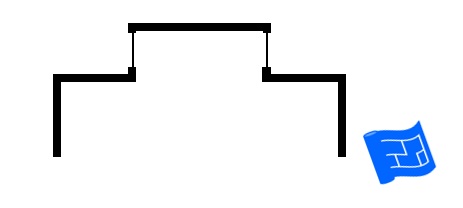 A bay window design open on only two sides. This is a useful arrangement if there is an ugly view in the usual sight line of a window.
A bay window design open on only two sides. This is a useful arrangement if there is an ugly view in the usual sight line of a window.Window treatments in bay windows
If the ceiling height of your bay window is lower than the rest of the room you have two options for where to place your curtains. You can choose to follow the line of the bay window, or put your curtains along the straight wall.
Notice how on the right the curtains are continued around the edge of the bay window onto the wall.
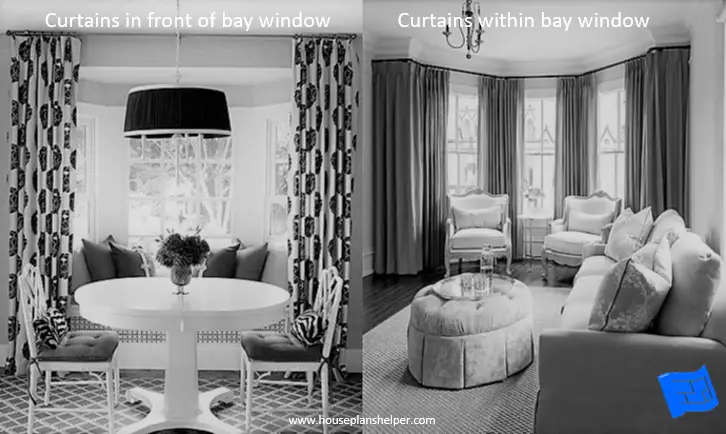 Bay window window treatments designs. Curtains can be placed around the bay or along the front of the bay.
Bay window window treatments designs. Curtains can be placed around the bay or along the front of the bay.Bay windows over several floors
Bay windows can be very effective over several floors. A bay window can create a balcony for the floor above, or another bay window can be placed above.
The iron work of the balcony on this round bay window is a bit like a crown for the window.
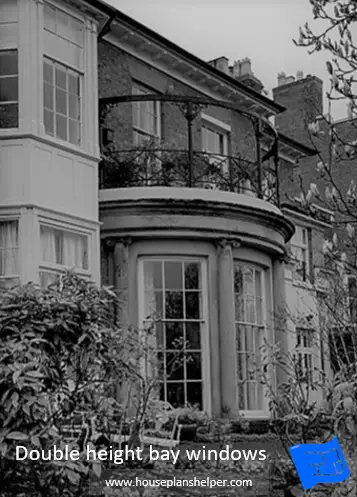 This facade has a double height set of trapezoid bay windows and another bay window comprising a round bay on the ground floor with a balcony above
This facade has a double height set of trapezoid bay windows and another bay window comprising a round bay on the ground floor with a balcony aboveBay window designs observations
Here's some real life examples of the bay windows designs concepts we've been talking about on this page.

